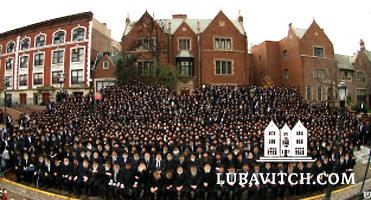To all appearances, the Chabad representatives in the group photo—an annual rite at the Conference of Shluchim—look very much alike. About 3,000 men, similarly dressed, convening under the banner of one vision, inspired by the Rebbe for the promise of a shared ideal of a Jewish future, cut a strikingly uniform picture.
But as is evident in the stories featured on Lubavitch.com, these requisite, self-effacing factors that would seem to dissolve all individual differences towards a common objective, in fact yield a vital experience where Shluchim are individually and variously engaged in the particulars of their own communities for the purpose of a dynamic Jewish present.
In the choices Shluchim make, in the way they reframe the challenges unique to their respective contexts and turn them into opportunities, we get a real life distillation of individual expression within the world of Chabad. Ushers of tradition, the Shluchim are also innovators with a healthy disregard for the impossible, and, sometimes, for the conventional.
Their approach is the current rave among competitive businesses across the industries. Instead of the staid, traditional models, business leaders newly enamored with “innovative strategic thinking” are now searching for ways to cultivate a culture of innovation that depends on individual creativity and social networking to give their companies the competitive edge.
But Chabad Shluchim cut their teeth on this model exemplified by the Rebbe. Master of paradox, the Rebbe seemed always to locate the opportunity for spiritual growth at the midpoint of conceptual polarities. The Jew must find his grounding in an immutable tradition, yet answer to the changing call of the present. We are beholden to the Torah of our forebears, yet duty bound to find its modern day applications. The Jewish community is central to Jewish life, but individual expression no less essential.
Where a suspicious regard of the new would be the natural inclination, the Rebbe inspired a pioneering spirit. Where individual potential might be stymied by the collective, the Rebbe harnessed individual creative forces. For his agenda of Jewish education and yiddishkeit, he built a social network and fostered a climate of innovation so dramatic it rankled members of the old school.
In the end, his model continues to yield results outstanding for their success at answering to the challenges of the current reality and shaping distinct paradigms of Jewish life in the 21st century.

Be the first to write a comment.